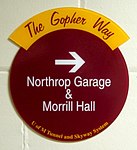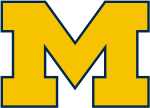Geometry Center
AC with 0 elementsGeometry educationMathematics education in the United StatesNational Science Foundation mathematical sciences institutesResearch institutes in Minnesota ... and 4 more
University of MinnesotaVisualization (research)Wikipedia external links cleanup from October 2021Wikipedia spam cleanup from October 2021
The Geometry Center was a mathematics research and education center at the University of Minnesota. It was established by the National Science Foundation in the late 1980s and closed in 1998. The focus of the Center's work was the use of computer graphics and visualization for research and education in pure mathematics and geometry.The Center's founding director was Al Marden. Richard McGehee directed the Center during its final years. The Center's governing board was chaired by David P. Dobkin.
Excerpt from the Wikipedia article Geometry Center (License: CC BY-SA 3.0, Authors).Geometry Center
Southeast Church Street, Minneapolis
Geographical coordinates (GPS) Address Nearby Places Show on map
Geographical coordinates (GPS)
| Latitude | Longitude |
|---|---|
| N 44.973606 ° | E -93.233844 ° |
Address
Ford Hall
Southeast Church Street 224
55455 Minneapolis
Minnesota, United States
Open on Google Maps





